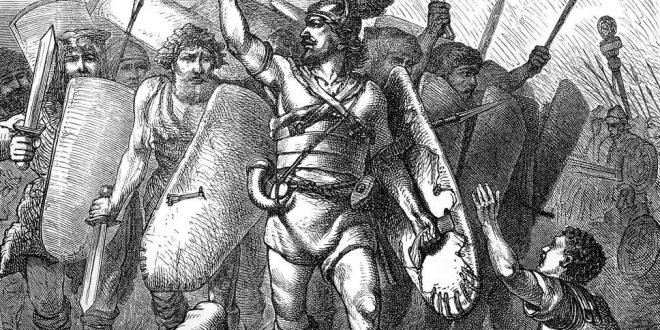Genetic evidence reveals family structure and origins of the Longobards, a group that ruled northern Italy after the western Roman empire collapsed
DNA recovered from 6th century graves has offered an unprecedented insight into a largely mysterious period of ancient history.
Europe underwent a massive upheaval from the 3rd to the 10th centuries as the western Roman empire collapsed and barbarian groups flooded into the region.
While the names of these groups are remembered, the lack of reliable written accounts means our knowledge of them is limited and must be pieced together from the archaeological remains scattered across the region.
One group, the Longobards, also knows as the Lombards, ruled huge swathes of Italy for at least 200 years after invading from what is now Hungary.
Cemeteries unearthed across central Europe confirm historical accounts of the Longobards’ progress across the region, but they tell experts little about this ancient society.
In a new paper published in the journal Nature Communications, an international research group consisting of geneticists, historians and archaeologists has attempted to improve this situation by delving into the genetic code of these barbarian invaders.
They examined two graves, one in present-day Hungary and the other in northern Italy, both containing a few dozen bodies.
The remains were buried in a precise manner, often with artefacts, and the scientists thought that analysing the DNA of these groups would help them understand the logic behind these elaborate arrangements.
What they found surprised them. The different types of genetic data they obtained seemed to match very distinct groups of people within the cemetery.
Those buried in their finery, surrounded by extravagant grave goods likes swords and shields for men and jewellery for women had genetic ancestry commonly found in modern northern and central Europeans.
Meanwhile, those bodies buried without masses of grave goods had genomes that more closely resembled southern Europeans.
“This appears to suggest that these particular communities contained a mix of individuals with different genetic backgrounds, that they were aware of these differences, and that it likely influenced their social identity,” said Professor Patrick Geary of the Institute for Advanced Study, one of the paper’s senior authors.
The discovery of these two different groups appears to confirm the theory that the Longobards migrated to the region from central or northern Europe – while the southern population were probably local residents.
“Our current results are consistent with the idea of barbarians migrating from north of Danube and east of the Rhine, which would suggest we are observing the invasions previously described by the Romans,” said Dr Krishna Veeramah, a geneticist at Stony Brook University.
“It is also likely that social organisation was based around large high-status male biological kinship groups, and these were key to establishing communities following the migration into Italy.”
Their analysis found evidence of family relationships stretching back generations, with related individuals buried together in groups.
“It looks like both these cemeteries organised themselves around one or two large groups of biologically related kin, with the vast majority of these individuals being men,” said Dr Veeramah.
Having established a team that covers many disciplines, the researchers want to use their skills to investigate more ancient burial sites and learn about family and social structures from the distant past.
“There are thousands of medieval cemeteries out there for us to look at. This is hopefully just the beginning of our work,” said Professor Geary.
The Independent
 Lebanese Ministry of Information
Lebanese Ministry of Information



